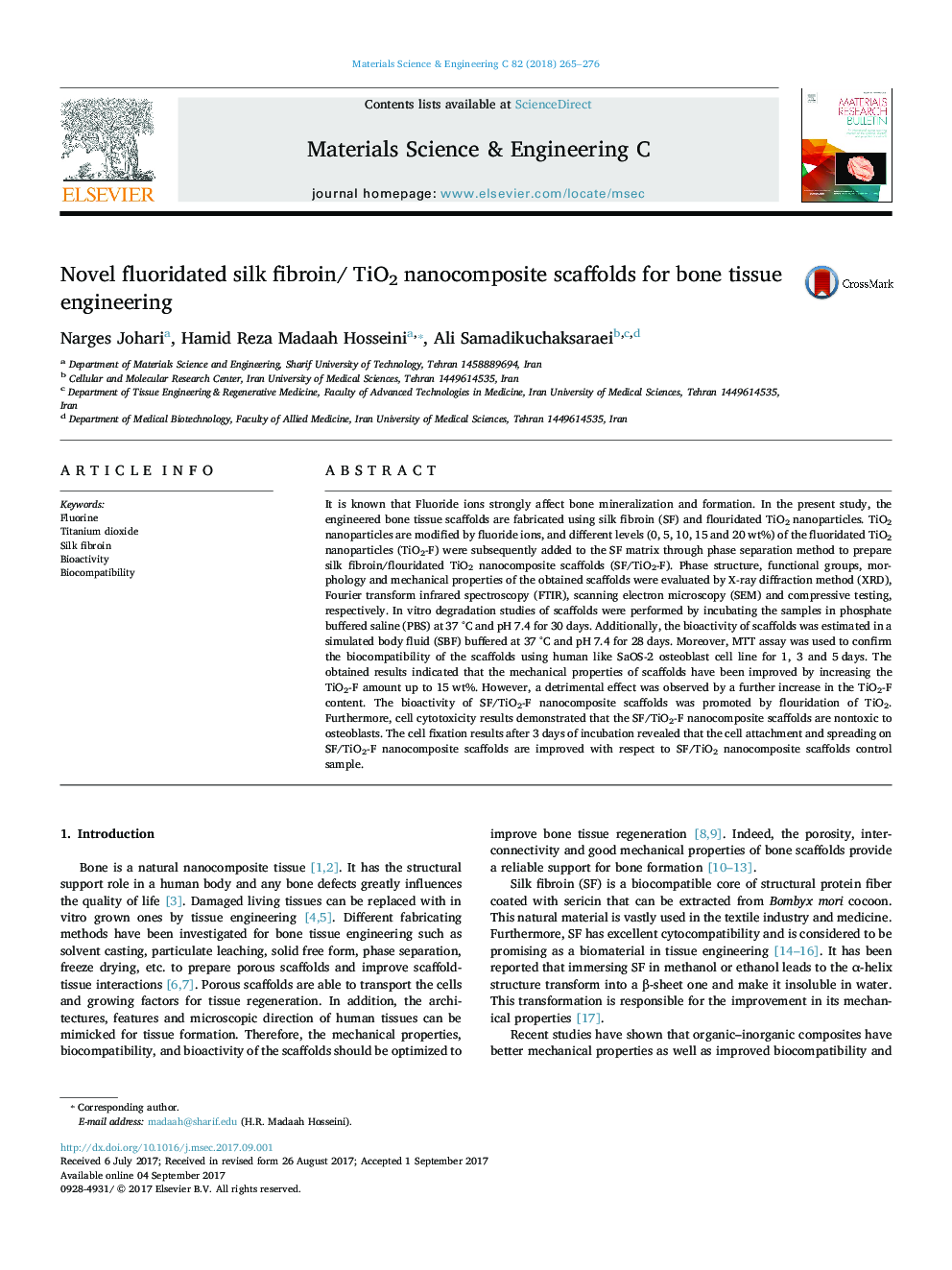| کد مقاله | کد نشریه | سال انتشار | مقاله انگلیسی | نسخه تمام متن |
|---|---|---|---|---|
| 5434186 | 1509139 | 2018 | 12 صفحه PDF | دانلود رایگان |

- Preparation a novel Fluoridated Silk Fibroin/ nano-TiO2 Scaffolds by phase separation method.
- The effect of fluorine on bioactivity behavior of Fluoridated fibroin /nano-TiO2 scaffolds.
- The effect of fluorine on biocompatibility of Fluoridated fibroin /nano-TiO2 scaffolds.
- Introducing an optimized composition of Fluoridated fibroin / nano-TiO2 scaffolds.
It is known that Fluoride ions strongly affect bone mineralization and formation. In the present study, the engineered bone tissue scaffolds are fabricated using silk fibroin (SF) and flouridated TiO2 nanoparticles. TiO2 nanoparticles are modified by fluoride ions, and different levels (0, 5, 10, 15 and 20 wt%) of the fluoridated TiO2 nanoparticles (TiO2-F) were subsequently added to the SF matrix through phase separation method to prepare silk fibroin/flouridated TiO2 nanocomposite scaffolds (SF/TiO2-F). Phase structure, functional groups, morphology and mechanical properties of the obtained scaffolds were evaluated by X-ray diffraction method (XRD), Fourier transform infrared spectroscopy (FTIR), scanning electron microscopy (SEM) and compressive testing, respectively. In vitro degradation studies of scaffolds were performed by incubating the samples in phosphate buffered saline (PBS) at 37 °C and pH 7.4 for 30 days. Additionally, the bioactivity of scaffolds was estimated in a simulated body fluid (SBF) buffered at 37 °C and pH 7.4 for 28 days. Moreover, MTT assay was used to confirm the biocompatibility of the scaffolds using human like SaOS-2 osteoblast cell line for 1, 3 and 5 days. The obtained results indicated that the mechanical properties of scaffolds have been improved by increasing the TiO2-F amount up to 15 wt%. However, a detrimental effect was observed by a further increase in the TiO2-F content. The bioactivity of SF/TiO2-F nanocomposite scaffolds was promoted by flouridation of TiO2. Furthermore, cell cytotoxicity results demonstrated that the SF/TiO2-F nanocomposite scaffolds are nontoxic to osteoblasts. The cell fixation results after 3 days of incubation revealed that the cell attachment and spreading on SF/TiO2-F nanocomposite scaffolds are improved with respect to SF/TiO2 nanocomposite scaffolds control sample.
Journal: Materials Science and Engineering: C - Volume 82, 1 January 2018, Pages 265-276